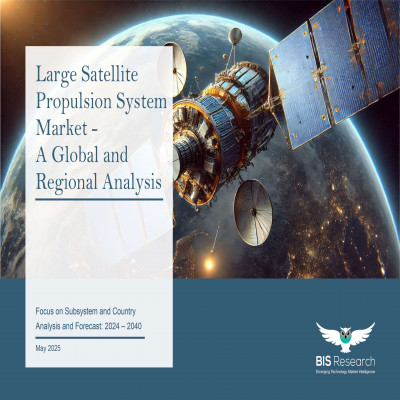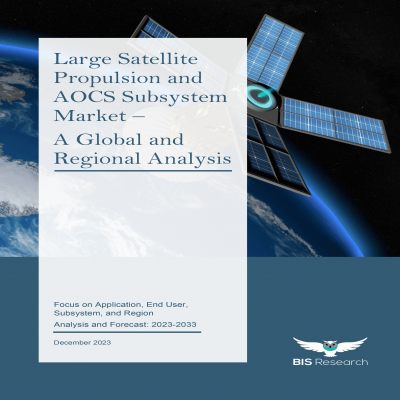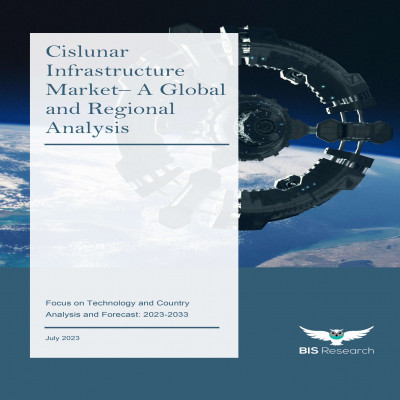A quick peek into the report
Lunar Lander Propulsion System Market - A Global and Regional Analysis
Focus on Subsystem and Country Analysis - Analysis and Forecast, 2025-2040
Frequently Asked Questions
Lunar lander propulsion system products refer to the critical components and technologies designed to enable controlled descent, landing, and maneuvering of lunar landers on the Moon’s surface. These products include chemical thrusters, electric propulsion units, control valves, fuel tanks, and engine control systems. The lunar lander propulsion system market offers various types of propulsion solutions, primarily categorized into chemical propulsion, electric propulsion, and hybrid propulsion systems. Chemical propulsion remains dominant due to its high thrust and reliability, while electric propulsion is gaining traction for its fuel efficiency and precision in orbital maneuvers. Hybrid systems combine the benefits of both technologies to address specific mission requirements. These propulsion solutions are continuously evolving to meet the increasing demands for safety, accuracy, and cost-effectiveness in lunar exploration. As a result, the lunar lander propulsion system market is witnessing robust innovation driven by advancements in materials, fuel formulations, and control technologies.
Existing market players in the lunar lander propulsion system market are adopting several strategic approaches to strengthen their position in this highly competitive industry. Companies are investing heavily in research and development to innovate propulsion technologies that offer greater efficiency, reliability, and mission flexibility. Collaborations and partnerships with space agencies and private aerospace firms are being pursued to secure key contracts and expand market reach. Additionally, firms are focusing on developing modular and scalable propulsion solutions to cater to diverse mission profiles. Emphasis on compliance with evolving regulatory frameworks, including export controls, ensures smooth international cooperation. Market players are also enhancing their capabilities in advanced materials and fuel technologies to improve system performance and reduce costs. These strategies collectively enable companies to maintain leadership and capitalize on the growing opportunities within the lunar lander propulsion system market.
A new company entering the lunar lander propulsion system market should focus on developing innovative propulsion technologies that prioritize efficiency, reliability, and safety to meet the stringent demands of lunar missions. Emphasizing research in advanced chemical thrusters and electric propulsion systems can provide a competitive edge. Additionally, investing in modular and adaptable propulsion solutions will allow the company to serve diverse mission requirements. Building strong partnerships with space agencies and private sector stakeholders is essential for market access and credibility. Compliance with international regulations, including export controls, should be integrated early in the development process. Furthermore, leveraging cutting-edge materials and fuel technologies can enhance performance while reducing costs. By concentrating on these areas, a new entrant can effectively position itself to thrive within the lunar lander propulsion system market.
The lunar lander propulsion system market is currently experiencing notable growth driven by increased investments in lunar exploration programs and advancements in propulsion technologies. Demand for reliable, efficient, and precise propulsion solutions is rising as space agencies and private companies accelerate lunar mission timelines. Although specific market size figures for lunar lander propulsion systems alone are limited, the segment benefits from the broader space propulsion industry’s expansion, which reflects robust innovation and heightened mission complexity. The market growth is propelled by the need to develop propulsion systems that can ensure safe lunar landings, maneuverability, and long-term sustainability. As lunar exploration efforts intensify, the lunar lander propulsion system market is expected to continue expanding steadily, supported by technological progress and growing global interest in lunar activities. Key players are focusing on enhancing performance, reducing costs, and complying with regulatory standards to capitalize on emerging opportunities.
The lunar lander propulsion system market features key players such as L3Harris Technologies, Northrop Grumman, Moog Inc., and Lockheed Martin, each contributing significantly to the advancement of propulsion technologies for lunar missions. These companies specialize in developing reliable and efficient propulsion solutions, including liquid-propellant thrusters and green propulsion engines tailored to meet the demanding requirements of lunar exploration. Their innovations support various lunar lander projects and enhance mission success by ensuring precise landing and maneuverability. While specific market share data is limited, these industry leaders play a crucial role in shaping the lunar lander propulsion system market through continuous technological advancements and strategic collaborations.
The lunar lander propulsion system market is driven by advancements in propulsion technologies, including chemical and electric thrusters, which enhance mission reliability and performance. Increased investments from government agencies and private companies accelerate development efforts, while international collaborations and competition stimulate innovation. Additionally, there is a strong focus on creating cost-effective and sustainable propulsion solutions to support long-term lunar exploration goals. These trends collectively shape the evolving landscape of the lunar lander propulsion system market.
The lunar lander propulsion system market faces several challenges that impact its development and deployment. A primary concern is the complexity of the propulsion system design, which must operate effectively in the Moon's harsh environment, characterized by extreme temperature variations and low gravity. This necessitates advanced thermal management and structural integrity to ensure reliable performance. Additionally, propellant management presents difficulties, as the Moon's low gravity affects fluid dynamics, making propellant storage and delivery systems more complex.
The lunar lander propulsion system market presents significant growth opportunities driven by advancements in material science, enabling the development of next-generation thruster pumps with enhanced durability and performance. Integration of AI-driven predictive maintenance and efficiency optimization further supports system reliability and cost-effectiveness. Expanding demand from emerging lunar exploration and commercial space ventures is fueling market expansion, alongside the increasing focus on sustainable and eco-friendly propulsion solutions tailored for lunar applications. Additionally, the development of solar-electric propulsion integration offers new avenues for efficient lunar lander operations. The growing interest in lunar surface exploration and in-situ resource utilization (ISRU) also creates opportunities for innovative propulsion systems designed to support extended missions and resource harvesting on the Moon. These factors collectively position the lunar lander propulsion system market for robust future growth.
The given industries can be seen as some of the USPs of the report:
• A dedicated section on growth opportunities and drivers
• A qualitative and quantitative analysis of the lunar lander propulsion system market based on product
• Trend and challenge analysis of different countries, which includes:
o U.S.
o Canada
o China
o India
o Germany
o U.K.
• Regional and country-level forecast
Companies developing lunar lander propulsion system products, thruster manufacturers, government and regulatory bodies, R&D institutions, and inspection satellite providers should buy this report.




